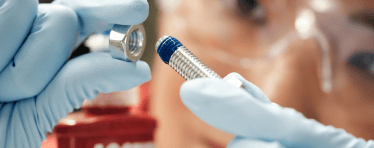
Adhesives in Manufacturing
Get your questions answered by browsing these topic-related FAQs.
FREQUENTLY ASKED QUESTIONS
Understanding Joining Methods in Manufacturing
Should I choose a permanent or temporary joint method for my project?
When choosing between permanent and temporary joints, several important factors should be considered, including, desired strength and durability, maintenance and accessibility requirements, skills required, cost, material compatibility, assembly and disassembly, longevity and wear, and environmental conditions. The type of joint must align with the overall objective of the project.
Learn more ›What is the key difference between temporary joining and permanent joining?
Temporary joints are designed to be disassembled, allowing joined components to be easily separated without damage. This is relevant to consider for maintenance, repair, or adjustment purposes. Permanent joining is intended to last for the life of the product. Disassembly typically destroys the joint or the components.
Learn more ›What are the most common methods of permanent joining?
The most common methods in permanent joining are welding, brazing, soldering and structural adhesive bonding. Each method has unique advantages and applications, and the choice of method often depends on materials, required strength, cost, and maintenance requirements.
Learn more ›What are the most common methods of temporary joining?
The most common methods in temporary joining are bolting, screwing, riveting and pinning. Each method has unique advantages and applications, and the choice of method often depends on materials, required strength, cost, and maintenance requirements.
Learn more ›Testing and Environmental Factors
What are the challenges of non-destructive testing?
Despite its many advantages, non-destructive testing (NDT) also comes with various challenges, including high equipment costs, limited quantitative data, material limitations and safety concerns. Some NDT methods are less effective at detecting <a style='color: #E1000F; text-decoration: underline;' href='https://www.loctitex.com/en/manuals/bonding/2.2.1-substrates/'>subsurface</a> defects, require expensive equipment and provide primarily qualitative data.
Learn more ›How do environmental factors affect the choice of adhesive?
Environmental factors can affect the performance (both negatively and positively), durability, and applicability of adhesives. When selecting an adhesive, critical environmental factors include temperature, <a style='color: #E1000F; text-decoratioN: underline;' href='https://www.loctitex.com/en/manuals/bonding/4.5.3-humidity-and-water/'>humidity and moisture</a>, UV exposure, chemical exposure, and <a style='color: #E1000F; text-decoration: underline;' href='https://www.loctitex.com/en/manuals/bonding/4.4-stresses-on-joints/'>mechanical stress</a>. For example, some adhesives may lose strength when exposed to high heat while others may gain strength.
Learn more ›Adhesives in Manufacturing: Use, Challenges, and Curing
What are the disadvantages of using adhesives compared to conventional fasteners in manufacturing?
While adhesives offer many advantages in manufacturing, such as the ability to join dissimilar materials and distribute stress evenly, there are several disadvantages compared to using conventional mechanical fasteners like bolts, screws, and rivets. Key drawbacks include curing time, surface preparation, temperature limitations, and difficulty with disassembly and repair.
Learn more ›How does surface preparation impact the use of adhesives in manufacturing?
<a style='color: #E1000F; text-decoration: underline;' href='https://www.loctitex.com/en/manuals/bonding/4.3.4-surface-preparation-chemical-preparation'>Surface preparation</a> is a critical factor when using adhesives in manufacturing. It directly impacts the strength and longevity of the adhesive bond in terms of quality, durability, consistency, and material compatibility. Adequate surface preparation will provide the highest performance from an adhesive, though it is not always required.
Learn more ›Why might adhesives not be suitable for all manufacturing applications?
While adhesives are highly beneficial, even critical, for many technical applications (e.g. touchscreens, speakers, medical devices), they are not universally the best choice. This may be due to one of several factors, including load-bearing limitations, environmental factors (e.g. strong acids and bases), expected extreme temperatures, regulatory requirements, manufacturing process requirements (e.g. heat treating components post assembly) or concerns over the use of chemicals.
Learn more ›What considerations should be made regarding the curing time of adhesives?
When using adhesives in manufacturing, assembly, or maintenance processes, the cure time needs careful consideration to ensure optimal performance and efficiency. Key considerations when selecting the cure time of an adhesive include production schedule and throughput, handling strength requirements, environmental conditions, fixture time vs full cure time, and post-curing treatments.
Learn more ›EXPLORE OTHER TOPICS
Everything we know -
in your hands
Whether engineering new, more innovative product designs or working to reduce unplanned plant downtime and improve efficiency, LOCTITE®X, our online learning platform,provides novices and seasoned professionals alike with knowledge and skills to address and tackle various industrial challenges.
Start learning - today

